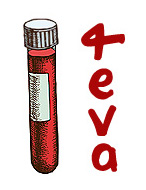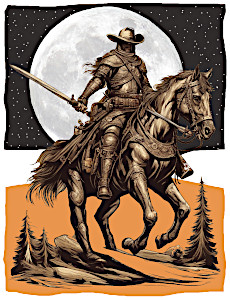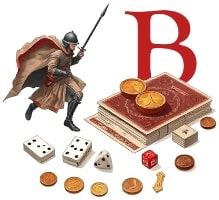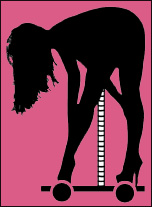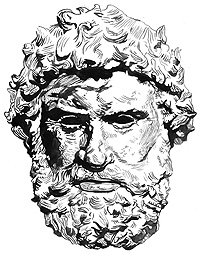“James, a pair of bronze statues of Greek make in Italy have been recovered by divers. They are savagely sinister in appearance, the left arm raised as if fitted with a shield. One academic, a female professor, commented that these were obviously fantastical images, as no man before steroids would be able to get that muscular…”
“How much do I think they would weigh if they were 5’ 10”? Oh, 175, maybe 180, a bit light in the legs by modern strength standards, but with wide shoulders and big chests.”
-Lynn
…
MiLady, by modern strength standards you mean “non-fighting” standards. You just described numerous middleweight to light heavyweight boxing champions, or welterweight to middleweight MMA fighters and many standout MLB outfielders and short stops. Just like modern scholars deny Alexander understood war, and boxing writers deny that ancient gauntlet boxers or early modern bare-knuckle fighters knew how to box, so the full spectrum defamation continues in the hands of our gate keepers. Right now, I am living with a 22 year old man, a soldier, who is up for Special Forces selection. He runs 40 miles with a 50 lb ruck on—runs, does it in a couple hours. He is 5’ 10” and 190, looking to trim down to 185 for selection, so he has 10 pounds of muscle to lose in the field and still be strong, putting him at 175, just what you described.
Major Wolf, who has made it into many novels, was a Major and Acting Colonel in the Army Rangers. He told me that the perfect Ranger was 5’ 10” to 6’ 1”, “maybe 6’ 2”, no more” and 165 to 185, “ranger lean.” He told me this as we traversed this mountain above me, me having a hard time keeping up, even though I was more fit and my knees were not ruined from jumping out of planes. The length of your stride means a lot cross country, the shorter legs working harder, burning more food, stretching tendons and nerves. My stretched femoral nerves do have some relation to doing shift steps and counter march steps as long as possible so I could cover as much ground in stick fighting as the taller men I dealt with. I learned this while rehabing.
Standard walking is 4 miles per an hour, what I do, superior 5, elite 6 and up. In multiple hours this makes a deadly difference when trying to take killing ground first. We are told that ancient people, anybody before mass diabetes created by the USG Food Pyramid, was tiny, when they were not. Only born slaves were short, such as the 5’ 6” inch British soldiers that fought under 5’ 10” inch officers against 6 foot Zulus in the 1870s. It was about the childhood diet.
The French army had a standard of 5’ 7” inches in the 1700s. Officers complained that man as small as 4’ 10” [gutter waifs] were being conscripted and sent to them in New France? The Indians they were supposed to fight were so big that they were hired to go round up the runaways, scooping them up like pedophiles nabbing children.
Much of the mobility advantage by Indians and frontiersmen over soldiers of the 1700s, was their meat-eater height advantage over the bread and beer fed soldiers. For uniform marching and dressing the armies wanted men between 5’6” and 5’9” in the regular ranks. Grenadiers had to be 5’ 10” or taller, to throw the grenade, and again for equipage. Only one size of shoes and uniforms were made for each troop type! These men would march at a higher rate. Grenadiers were also used as pressmen and to catch deserters, who could not out pace them.
Danial Boone was 5’10”, as was Blue Jacket, Tecumseh, Simon Girty, Lewis Wetzel and Rogers, with other frontier heroes taller, with Kenton 6’4”!, Liver-Eater 6 feet. They ate meat.
Rome also had standards for its legions, 5’ 7”, I think. This is an attempt to insure healthy men who can keep uniform march order and will not have malnutritive disorders earned in childhood. City boys were not desired, but farmers and barbarians. According to Michael Grant in Legions of the Empire, the first cohort of each legion, the guards, had men who must stand 5’ 10.”
Do note that men about 5’8” are ideal for labor, for engineering tasks, as they get injured less doing drudgery than taller men who, while possibly stronger, have more leverage against their joints hoisting weight, digging, etc. You want taller men in mobility units, not wasted in line units that do all the grunt work in sieges, bridging, road cutting, and camp building.
Do we see a pattern?
The men on horse back, ironically, would usually be taller than the foot soldiers, since they ate well as barbarian herdsmen or as feudal lords and the sons of oligarchs.
According to Victor Davis Hansen, the standard hoplite of the 400s and 300s in Greece stood 5’7” and weighed 145, a junior welterweight. These were predominantly barely-farming grain eaters.
However, the leading athletes could be giants, and it seems as if 6’ 4” was an easily obtainable height within the diet range in Classical Hellas for special men, such as competed in the sacred agons. Promachus “Front-line-fighter” turned the tide of a hoplite battle by breaking the line himself. In shield combat, big men rule. This is why the Spartan kings had Olympic victors by their side and why the best wrestler in history, Milo of Kroton fought in the front line. Such men, as did gladiators later, did engage in “steroid” use by eating certain animal organs and glands and vast quantities of meat. I know many very muscular men who use no such steroid type enhancement. Heavy built men were not desired in mobile units. The Romans only used gladiators to defend positions, as they were worse then useless in the field against less formidable fighters who they trained in basic swordmanship.
So, what would be the size of the Macedonians, who ate much more meat than the more southerly Greeks?
-Alexander seemed normal, at about 5’8”, but very quick and strong, with unmatched human stamina.
-Hephastion must have been over six feet, for he was taken to be Alexander on first meeting.
-Companions would rarely be shorter than 5’7” as they were oligarchs in meat country and many, such as Clitus the Black and Koragus probably went 6 to 6’4”.
-Guards, 5’ 10” to 6’4”
-Phalangites, 5’7” to 5’10”
-Allied Hoplites, 5’8” and up, being picked men, including Dioxiphos, MMA champion, meaning over 200 pounds.
-Archers, 5’9” to 6’4”, averaging 5’11”, being hunters probably the strongest men in the army able to draw bows that outranged the Scythian composite bow, meaning to the ear. These were like English Longbowmen of a later age who butchered French knights in hand to hand combat using axes, picks and mauls, being twice as strong as the smaller knights, tall working men.
-The Agrianes?
These were herders and hunters of the highlands, Arуans. Look at Scotsmen and Native American warriors, Vikings of later ages, as well as the Germans and Celts that faced the Romans and were their neighbors, described by all Roman sources as at least as tall as a man of the First Cohorts.
5’9” to 6”4” with the upper range dedicated to sergeants. I suggest that the weight range of these men run from 150 for lean body types and younger men, up to 200 pounds, with the average man standing 5’10” to 11” and scaling 160 to 175 pounds. [0]
The sergeants bearing the large rally shield, lance and heavier javelins instead of darts would tend to stand 6’+ and scale 185 to 200, just like the last fighter to KO me in a waster duel. [1] A man who stands six feet and scales 200 pounds, when using a heavier shield, is equal to two men of the smallest 150 pound range. More importantly, he can break ranks, crashing through a line of smaller men at the head of a wedge formation.
In about 900 B.C., there was a duel over Olympia, in which the armies each advanced a man. They did not advance a hoplite, but an archer versus a thrower. The duel was hand to hand, so they chose bigger men who were also quick, a Ranger. In the Crusade of Richard the Lionhearted in I think A.D. 1177, a duel broke out, between two archers of the opposing forces.
…
Notes
-0. Yes, the sculptures Lynn spoke of, which might hopefully grace the book.
-1. A waster is a blunt sword.
-2. It is possible that dogs were used by these forces, but mostly for hunting and sport for horsemen. If the Agrianes or archers had dogs, they would have to have been trained to silence on command for scouts and for signaling in defense of a camp perimeter.



